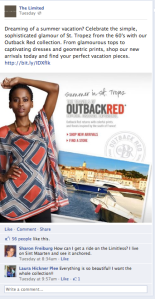Tags
The use of social media for MLB and the players is undergoing a major renovation for the 2012 season. For those of you who are unaware of the changes, check out this Mashable article! In short, MLB is planning on using twitter to host contests for followers with the hashtag #MLBTVme, staff will interview and take insider photos/videos of players before the game, and during the game staff will live tweet events going on in the ballpark. Make sure you check out the article for all the details.
After I posted this article on my delicious site, I was intrigued by what the social media policy looked like, especially for the players. So I did some research and found out! Below is a screenshot of the policy, but if you would like to visit the website and see for yourself, visit MLB Social Media Policy.
The social media policy is not part of any larger policy at the organization, but it was implemented due to the, “…recently completed collective bargaining negotiations….” I am sure this policy is also in conjunction with their cell phone policy, Baseball Operations Bulletin A-2. For example, players cannot use their cell phone starting thirty minutes prior to a game and until the last strikeout.
I will start with the positive part of the MLB social media policy. It begins with four definitions of key phrases/words used throughout the policy so all players understand the meanings in the context of this document. I like this because not all players may have the same idea of what the word “content” is referring to. In defining these key phrases/words, MLB is reducing confusion.
The negative of the policy is that it is not clearly formatted, but rather a list of ten rules to follow. The document also states an enforcement policy at the bottom, but it is not clear at all as to what the punishment is. Basically, it says that a player may be subject to discipline. In my mind, this means that it all depends how much you break the rules, if you are a star player, if they like you, etc. It almost seems better to just leave this part out if it is going to be so vague.
My Recommendations
I would start by grouping similar rules together to make it easier to read. Eight of the ten rules start with the phrase “Displaying or transmitting Content.” This makes it really hard to read because I feel like I am reading the same thing over and over and do not actually think about each rule individually. MLB could possibly make the header “Displaying or transmitting Content:” and then bullet the eight rules under. Another change I would make is to define how to get proper authorization for doing some of these things like posting a link to any MLB Entity. If the coach says it is okay, then does a player have proper authorization? I can see this being very confusing to players. Not being able to post a link to their own website is a terrible rule. I would change this. Isn’t the point to drive followers back to the website where they can find more information about the team and purchase tickets? The final thing I would change, as mentioned above, would be to re-write the enforcement policy to make it more clear. If MLB wants to be so wishy-washy about this, then take it out.
I believe that it is essential for organizations to have a social media policy in place. As we discussed in adpr4300, proper social media use seems like common sense to us, but many people do not have that common sense. Therefore, it is essential that organizations cover their butts and have a policy in place for all employees. Employees are representatives of the organization they work for and should view their social media platforms as such. Not only should employees represent their organization in a positive light, but themselves personally as well. A social media policy can help people avoid making terrible personal mistakes that could possibly ruin their reputation.













